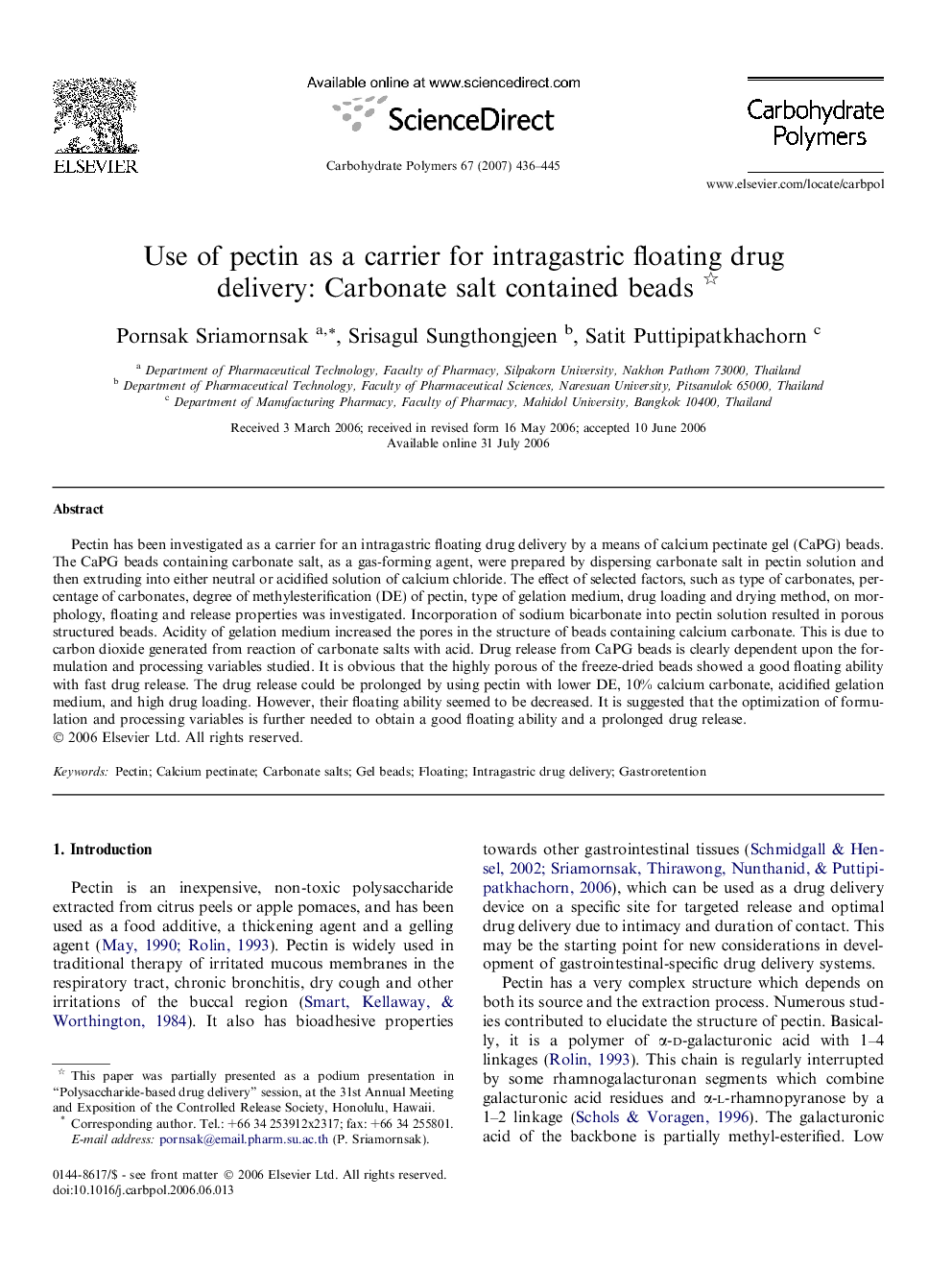| Article ID | Journal | Published Year | Pages | File Type |
|---|---|---|---|---|
| 1385644 | Carbohydrate Polymers | 2007 | 10 Pages |
Pectin has been investigated as a carrier for an intragastric floating drug delivery by a means of calcium pectinate gel (CaPG) beads. The CaPG beads containing carbonate salt, as a gas-forming agent, were prepared by dispersing carbonate salt in pectin solution and then extruding into either neutral or acidified solution of calcium chloride. The effect of selected factors, such as type of carbonates, percentage of carbonates, degree of methylesterification (DE) of pectin, type of gelation medium, drug loading and drying method, on morphology, floating and release properties was investigated. Incorporation of sodium bicarbonate into pectin solution resulted in porous structured beads. Acidity of gelation medium increased the pores in the structure of beads containing calcium carbonate. This is due to carbon dioxide generated from reaction of carbonate salts with acid. Drug release from CaPG beads is clearly dependent upon the formulation and processing variables studied. It is obvious that the highly porous of the freeze-dried beads showed a good floating ability with fast drug release. The drug release could be prolonged by using pectin with lower DE, 10% calcium carbonate, acidified gelation medium, and high drug loading. However, their floating ability seemed to be decreased. It is suggested that the optimization of formulation and processing variables is further needed to obtain a good floating ability and a prolonged drug release.
